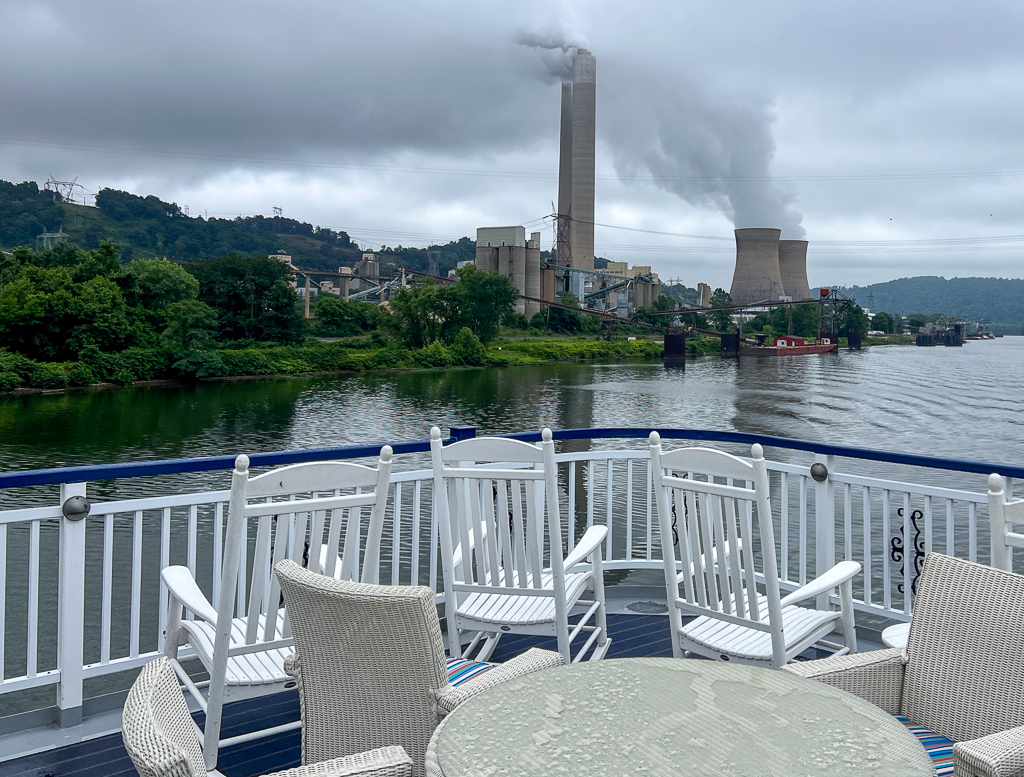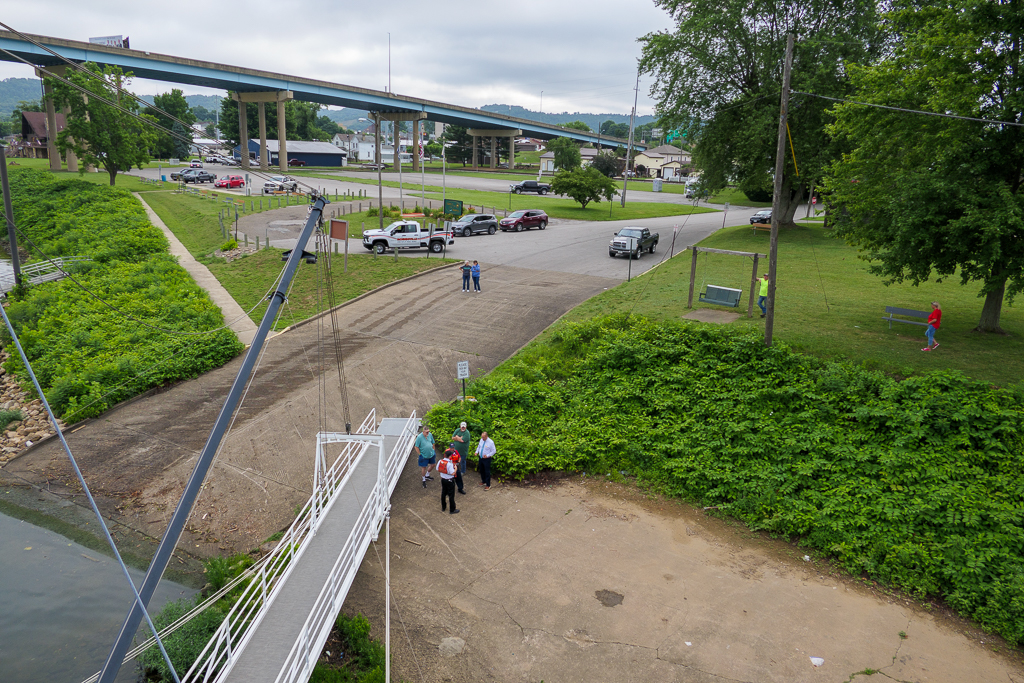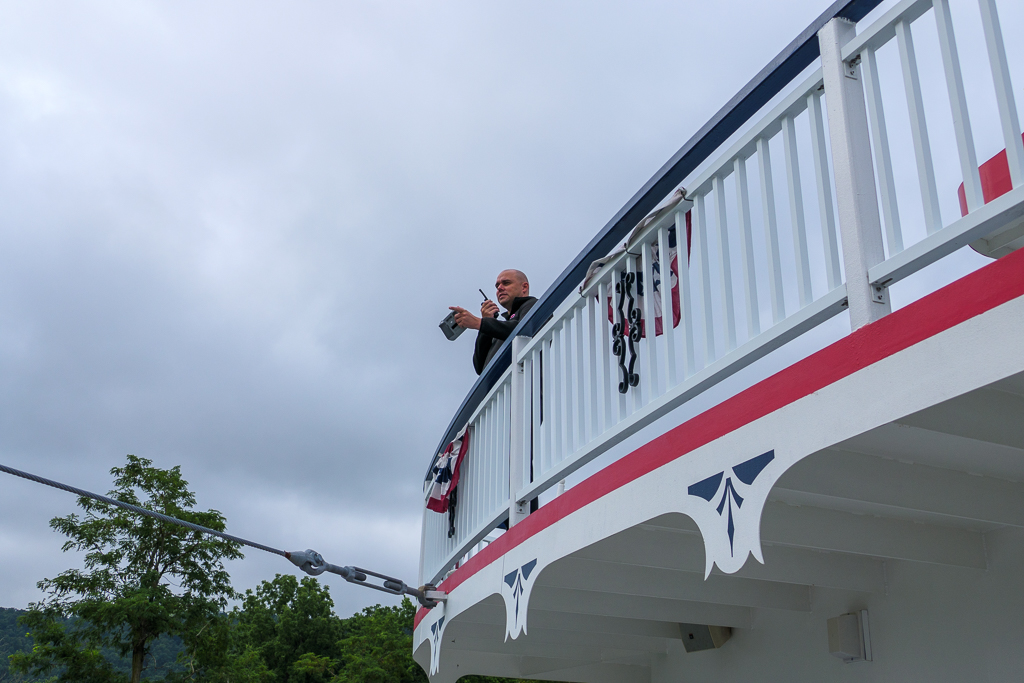We arrived in Marietta during lunch, nearly two hours ahead of schedule. Diane and I skipped dessert so we could get off the ship and start exploring sooner. We were tied up at the Public Landing near the foot of Front Street.
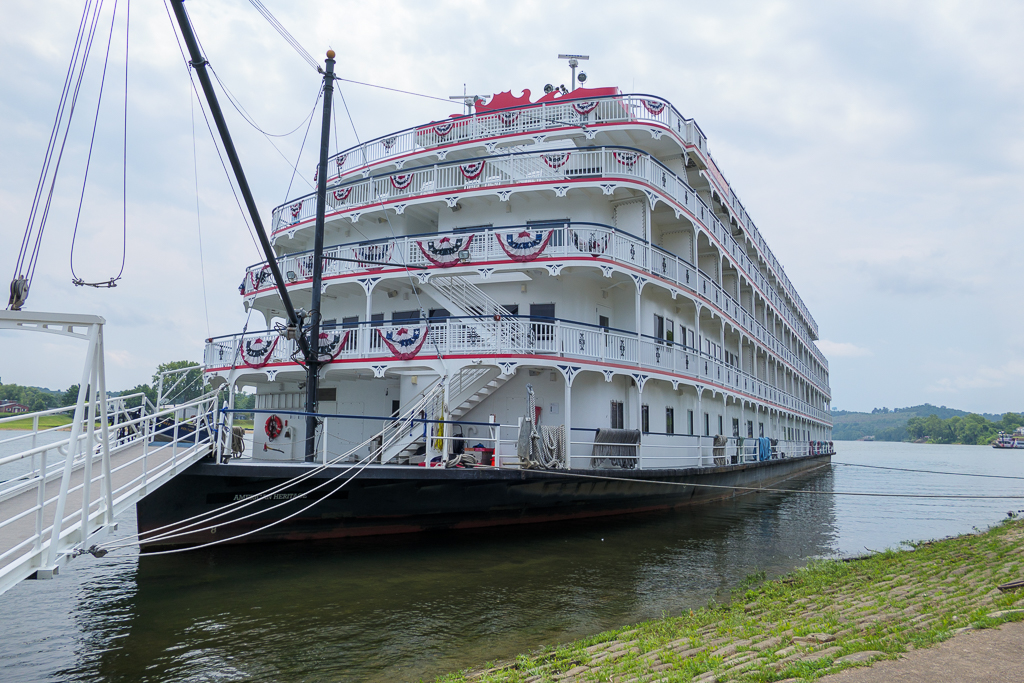

The ship had arranged admission to three museums in town: The Castle Historic House Museum, the Campus Martius, and the Toy and Doll Museum; they’d also arranged a bus loop. We decided to walk instead, and set off for The Castle.
Front Street was interesting; there were quite a few enticing shops and far too many vacant ones. We saw a couple of pylons like this one as we approached Muskingum Park.
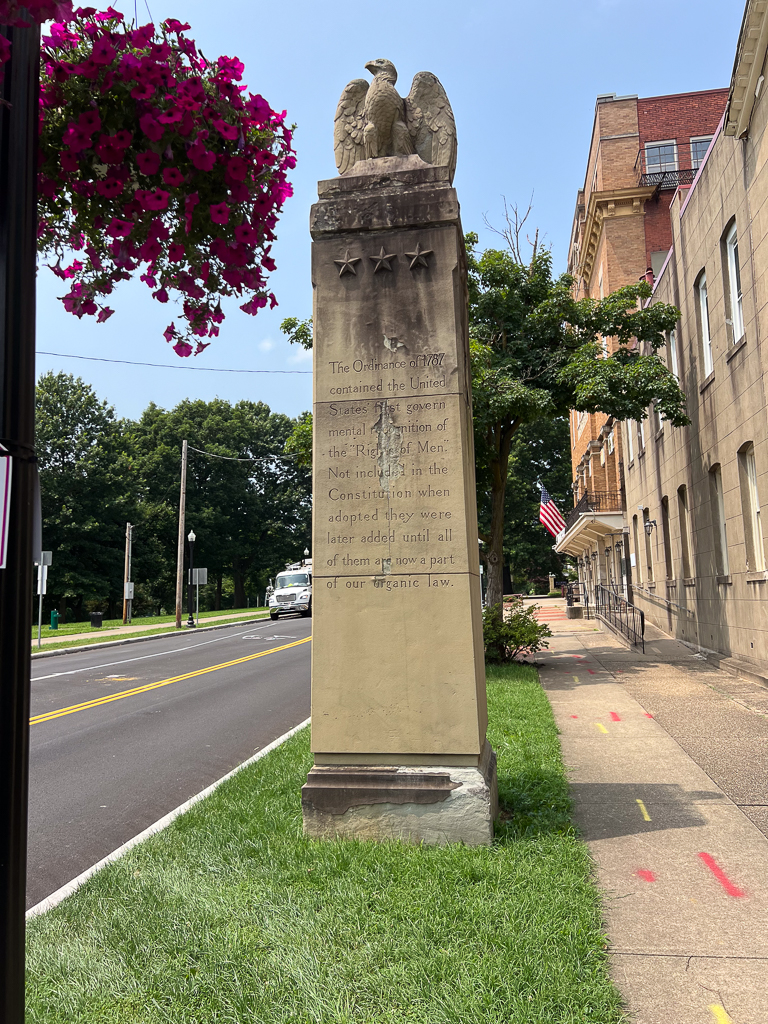
The text on the pylons clearly related to Marietta’s role as the first American settlement in the Northwest Territories, but there seemed to be something missing. We continued onward along the park and soon found ourselves at the memorial to the “Start Westward of the United States”, carved by Guzman Borglum of Mt. Rushmore fame.
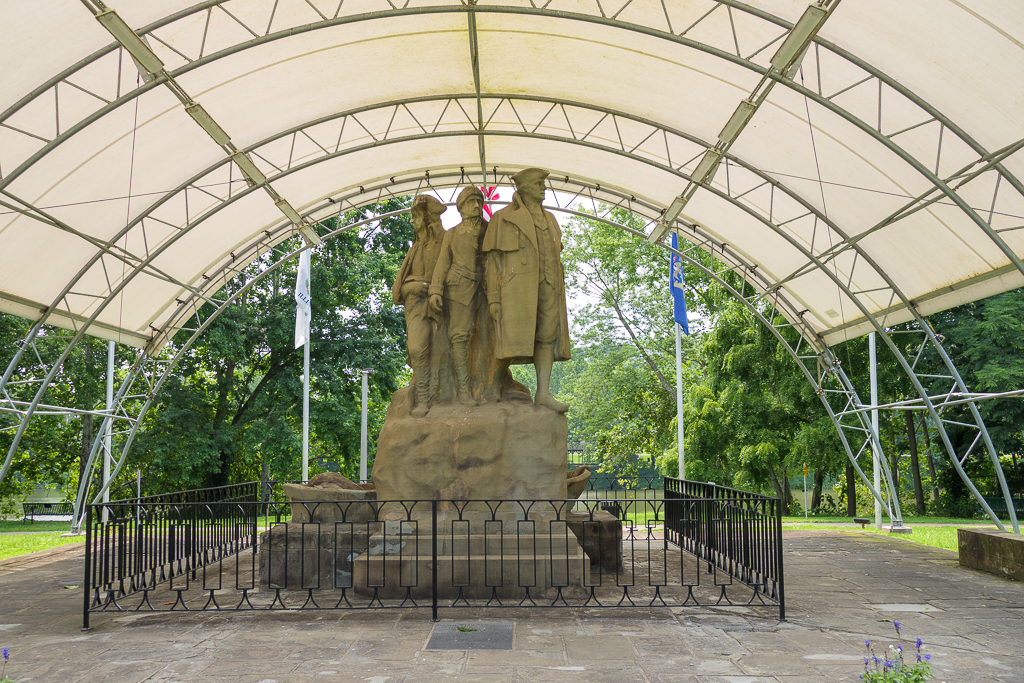
We also found a couple of interesting wooden carvings nearby, with no explanation.

It wasn’t until I started writing this blog entry that I discovered that they’d been carved by a local artist, Perl Totman, who wanted to do something useful with the ash trees in the park that had been killed by the emerald ash borer. He started the project at age 85 and passed along the torch when he turned 89!
We made up for not having dessert on the ship by stopping at Whit’s Frozen Custard; they’d rescued a decrepit Pure Oil station. The custard was quite tasty, but I think the building was more interesting.

We arrived at The Castle at the same time as the first bus from the ship. It had been built for a successful lawyer who was killed at Antietam; other prominent local families owned it, and the final resident five days before her 100th birthday. It’s filled with furnishings from its entire life; the last owner put in the most modern of ’70s intercoms (I don’t know if they still work).
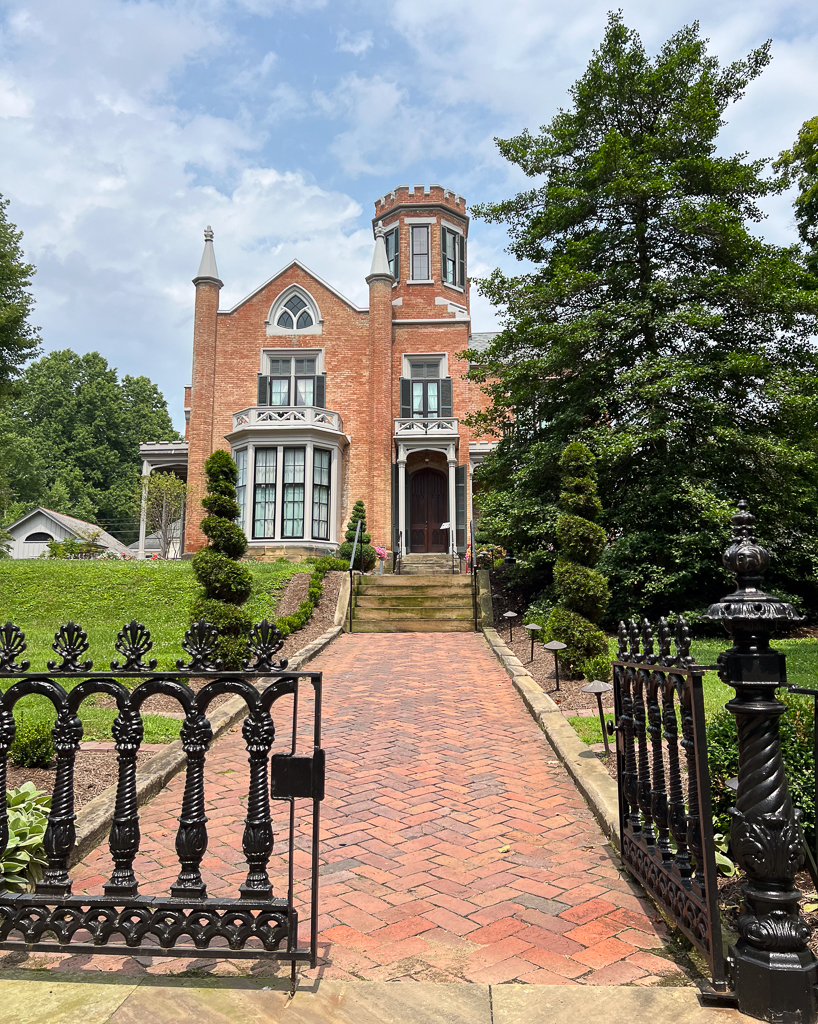


Our speaker this morning had talked about the moundbuilders of the Ohio and Mississippi River Valleys and had mentioned that there was a mound in Marietta; it had been converted into a veterans’ cemetery. It was only a couple of blocks away from the Castle, so we walked over to take a look and climb the mound (stairs had been installed decades ago).

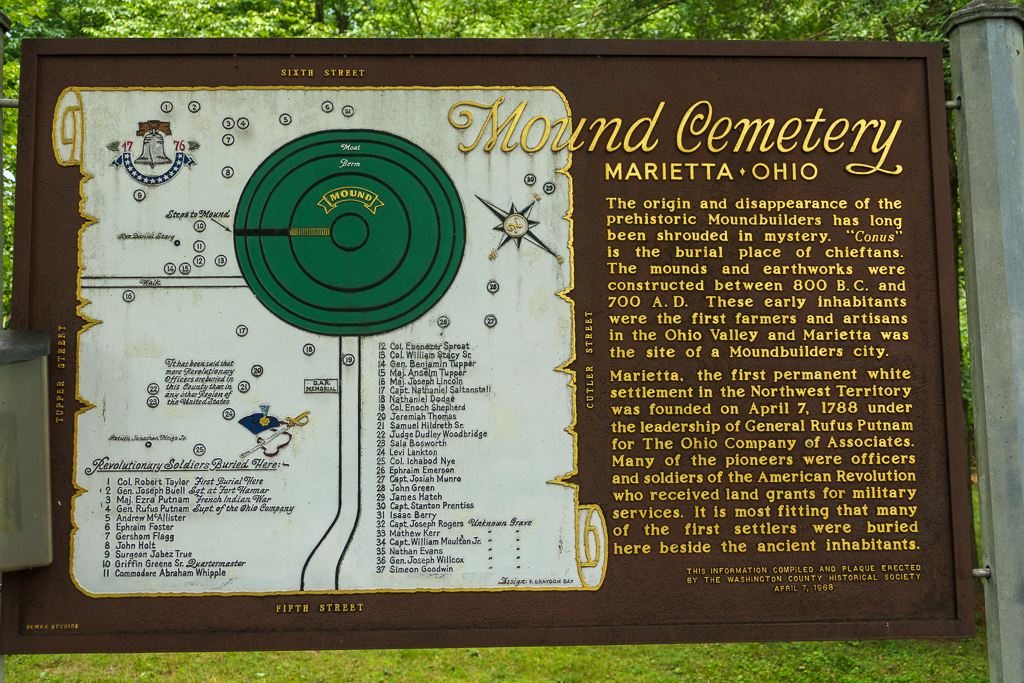

We walked over to the Campus Martius, which is at the original site of the stockade that the first residents of Marietta built. Their leader was Rufus Putnam, and we arrived just in time to join a tour of his house, which was part of the museum.
By the time the tour was over, the museum was closing, so we left to walk back to the ship.

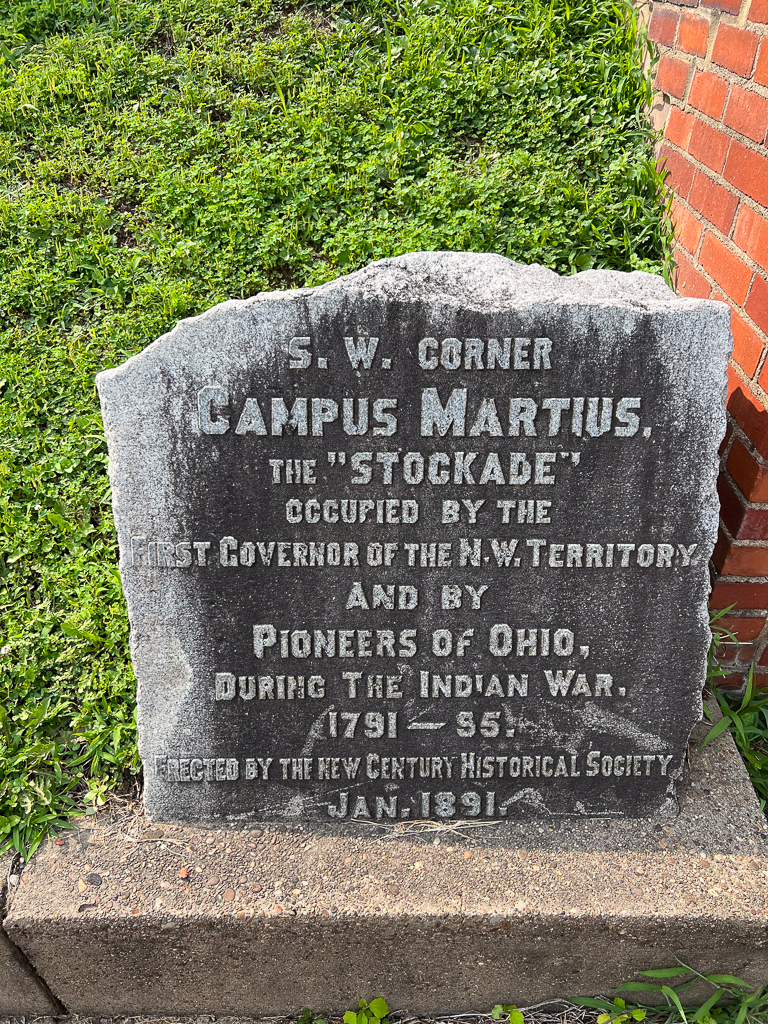
I saw another pair of pylons at the other end of Muskingum Park, this time in a residential area. When we got back to the ship, I researched them and discovered the Final Report of the Northwest Territory Celebration Commission that they were actually part of the “Start Westward of the United States” memorial. The text was hard to read on the pylons, but it was included in the report:
The Ordinance of 1787 contained the United States first governmental recognition of the Rights of Men Not included in the Constitution originally adopted they were later added until all of them are now part of our organic law.
Here the new United States of America found through Northwest Territory the first and common offspring of thirteen discordant and disputatious states her formula to eminence among all the governments of mankind.
Here with the founding of the nation’s first colony and establishment of the first American civil government west of the thirteen original states began the march of the United States of America across a continent to the western sea.
To those unfamed citizens who conceived a new purpose and direction for this nation in its making and whose insistence upon incorporation of the Rights of Men into our fundamental law set the pattern for America’s contribution to the governmental process of humanity.
It was an interesting afternoon in Marietta; I wouldn’t mind going back sometime and seeing some of what we missed.
